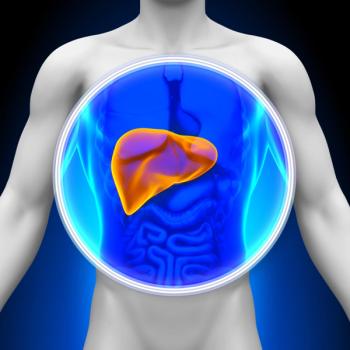
Oncology NEWS International
- Oncology NEWS International Vol 8 No 2
- Volume 8
- Issue 2
Radiolabeled MoAB Appears Effective in NHL Patients With Splenomegaly
ROCHESTER, Minnesota-IDEC-Y2B8, an anti-CD20 murine monoclonal antibody (MoAB) conjugated to the radioisotope yttrium-90, appears to be effective in non-Hodgkin’s lymphoma (NHL) patients with splenomegaly, Thomas Witzig, MD, said at an ASH poster session. Some have considered splenomegaly a contraindication to MoAB therapy because of theoretical concerns about the spleen acting as an “antibody sink,” limiting efficacy.
ROCHESTER, MinnesotaIDEC-Y2B8, an anti-CD20 murine monoclonal antibody (MoAB) conjugated to the radioisotope yttrium-90, appears to be effective in non-Hodgkins lymphoma (NHL) patients with splenomegaly, Thomas Witzig, MD, said at an ASH poster session. Some have considered splenomegaly a contraindication to MoAB therapy because of theoretical concerns about the spleen acting as an antibody sink, limiting efficacy.
Dr. Witzig, of the Mayo Clinic, and his colleagues looked at a subset of eight patients with spleno-megaly treated with IDEC-Y2B8 in phase I/II trials of the agent in patients with relapsed or refractory low- or intermediate-grade NHL.
They found that 88% of splenomegaly patients (7/8) had a response in the spleen, including a complete response (CR) in six patients (75%). The overall response rate in these patients was 50% (4/8), including two CRs. This was not significantly different from the 70% overall response (30/43), seen in patients without splenomegaly
Overall, among the 58 study patients, the response rate to IDEC-Y2B8 at all doses was 67% (25% CR); in patients with low-grade disease, it was 82% (27% CR), and in those with intermdiate-grade disease, 43% (29% CR).
Safety Data
Gregory Wiseman, MD, of the Mayo Clinic, reported safety findings from the study. Weve seen no major organ toxicity, and at all doses, the dose to the normal organs has been quite low in terms of what would be considered toxic with external beam radiation, he said. In general, IDEC-Y2B8 is probably less toxic than external beam even at the same dose.
Dr. Wiseman said that hematologic toxicity has been reversible. We have not had anyone who developed any prolonged cytopenia. Although some patients have required platelet transfusions, there have been no bleeding problems, and only three patients (6%) have been hospitalized for infection. They all recovered with appropriate treatment, he said.
He pointed out that infection rates and blood count drops are similar to what would occur with chemotherapy-based regimens, but the response rate with IDEC-Y2B8 in this group of heavily pretreated patients is better than we would see with chemotherapy.
An ongoing randomized phase III trial is comparing IDEC-Y2B8 with the unlabeled anti-CD20 chimeric MoAB rituximab (Rituxan). Another ongoing trial is looking at the radiolabeled agent in patients who have not responded to or are refractory to rituximab.
Articles in this issue
almost 27 years ago
Paclitaxel Plus Mitoxantrone for Poor-Prognosis Breast Canceralmost 27 years ago
Faslodex, Pure Antiestrogen, Studied in Tamoxifen-Resistant Breast Canceralmost 27 years ago
LHRH Agonist Plus Tamoxifen Improves Outcome in Young Metastatic Patientsalmost 27 years ago
Pros and Cons of Different Approaches to Chemoradiationalmost 27 years ago
Less Cardiotoxicity With Liposomal Doxorubicinalmost 27 years ago
Optimizing Docetaxel Tolerability in Anthracycline-Resistant Breast Canceralmost 27 years ago
Doxorubicin Appears to Change Natural History of HER-2+ Cancer’salmost 27 years ago
Tamoxifen After Surgery/RT Decreases Local Recurrence Risk in DCIS PatientsNewsletter
Stay up to date on recent advances in the multidisciplinary approach to cancer.
































































































